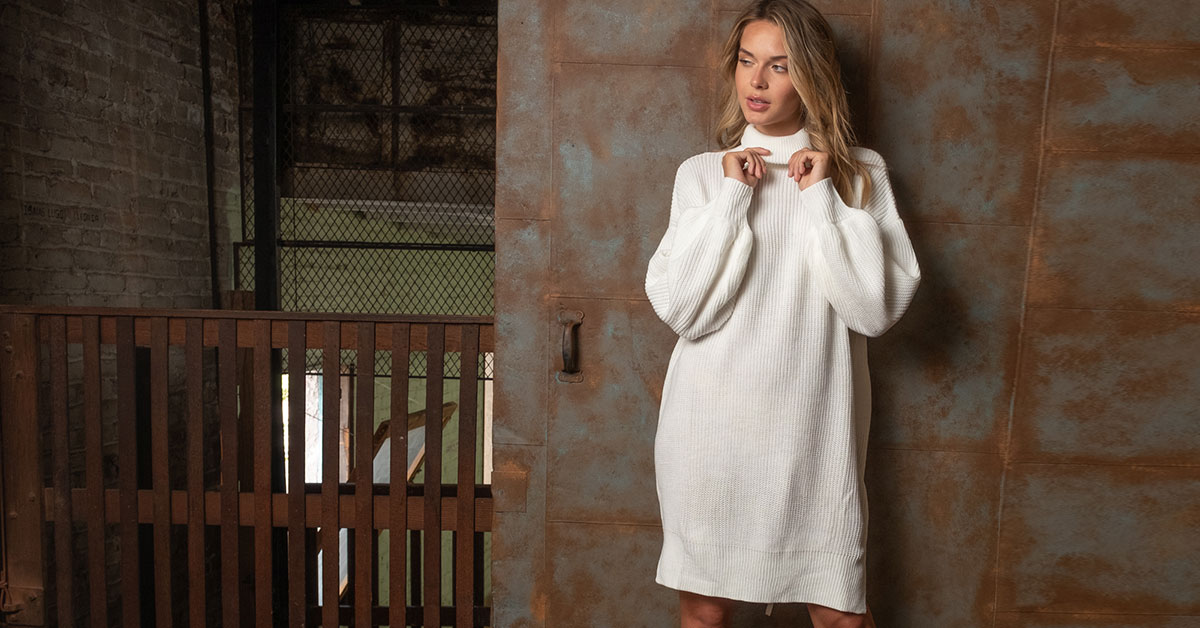If you’re interested in starting your own online boutique or expanding your selection of clothing and accessories in an existing business, you may have already considered a popular option: dropshipping! In a dropshipping model, a retailer (that’s you!) relies on a manufacturer or wholesale clothing purveyor to produce merchandise, store it in their warehouse, and ship it when the retailer makes a sale. The dropshipper handles the logistics of production, inventory and shipping, while the retailer handles marketing, customer service and website management.
Sounds great, right? As in any business endeavor, there are pros and cons to weigh when it comes dropshipping. We recently answered seven common questions about dropshipping; now, we’ll take a deeper dive into challenges frequently faced by boutique owners who use a dropshipping model, and how they can be overcome.
Out of Stock Items
One of the best things about working with a dropshipping partner for wholesale clothing is being free from the worries of inventory management. But a lack of control over inventory is also one of the biggest challenges faced by boutique owners who operate using a dropship model. You don’t want to disappoint your customers when their favorite products are out of stock, but your wholesaler is responsible for keeping inventory levels steady.
The best way to avoid out of stock items and customer disappointment is communication. First, it’s important to establish open lines of communication with your dropshipping partner. Look for a partner who keeps you up to date on inventory levels, and touch base with them regularly about upcoming demand and any production hiccups on their end. As the boutique owner, it’s also important to communicate clearly and sympathetically with your customers when they do face the disappointment that comes with an out-of-stock item. Keep them informed about backorder dates, suggest similar items, or offer a small discount on their next order if their desired item isn’t available.
Customer Service
Customer service can also be a challenging and confusing issue, especially when you’re just establishing a dropship business. As the boutique owner, are you responsible for fielding customer questions about shipping, inventory, and returns? Or does that fall to your dropshipping partner?
In general, it’s best to assume that you’ll be handling all customer communications—so you should have a plan in place! Make sure you set aside time every day to address customer questions and concerns regarding orders, item inquiries, or returns. In most cases, dropshippers do not communicate directly with customers about any merchandise or shipping concerns, though many (including Wholesale Fashion Square) do accept and process returns directly to their warehouse.
Shipping Issues
One important thing to note about dropshipping is that it requires a great deal of trust in your partner to promptly and accurately ship customer orders. In most cases, you can rely on your dropshipper to quickly unite your customers and their clothing, but mix-ups and lost packages do happen from time to time.
As a boutique owner, the best thing you can do to resolve shipping issues is keep accurate records. In the event of a shipping mishap, you’ll be able to get a lost order back on track if you can immediately provide your dropshipping partner with an accurate address, order manifest, and any tracking information associated with the initial order.
Lots of Competition
When working with a wholesale clothing dropship partner, it’s safe to assume that there are other boutiques in the marketplace that also sell your most popular products via that same dropshipper. That means you’re part of a competitive market!
As a boutique owner facing tough competition, the most important thing you can do is focus on ways to set your brand apart. Focus on establishing a distinctive visual identity for your website and marketing materials, offering valuable customer loyalty perks, staying creative on social media, and building collections of merchandise that reflect your unique style perspective. By putting your own spin on the items your dropship partner provides, you’ll be able to take on the competition!
Selling Sight-Unseen
If you fully stock your boutique with dropshipped merchandise, you might run into a troubling issue: you never actually see your own products! So, how can you be sure that your customers are receiving products that meet your high standards for quality and style?
The first thing you can do is place an order for your most popular items. That gives you a chance to see them in person, style them, and maybe even shoot them for use in your marketing materials. If you’re just starting out, it’s also a good idea to connect with your dropship partner and work with them to curate a collection of their best-selling products, which will have an established track record of successful sales. Finally, since you can’t order every item that you offer in your boutique, pay close attention to customer comments and reviews. This will help you discover which items aren’t meeting customer expectations, and which items are exceeding them.
What else do you want to know about common dropshipping challenges? Submit your questions in the comments below, or learn more in our dropshipping overview!








No Comments